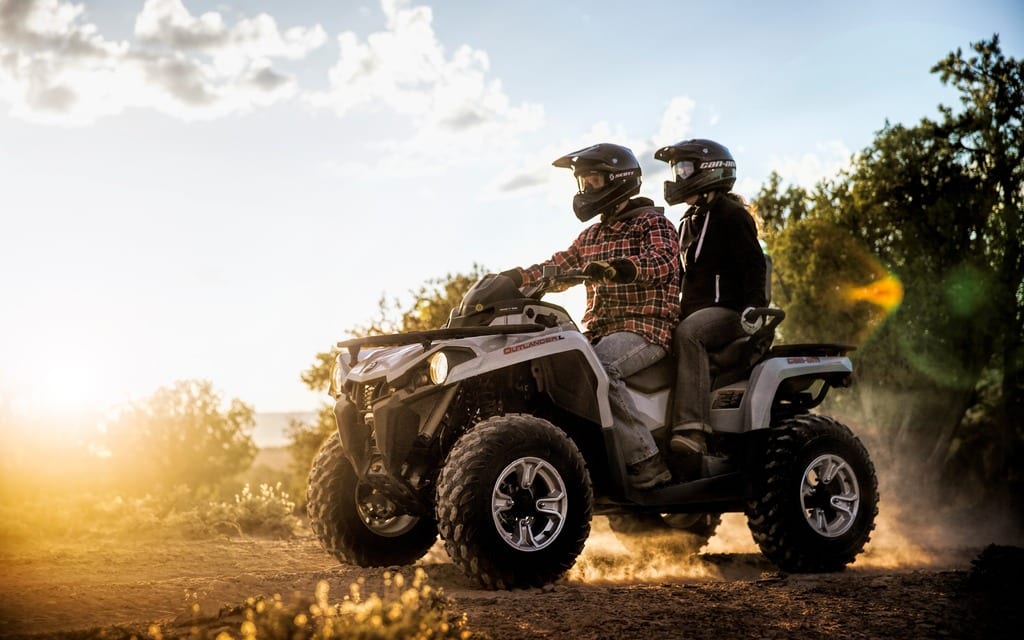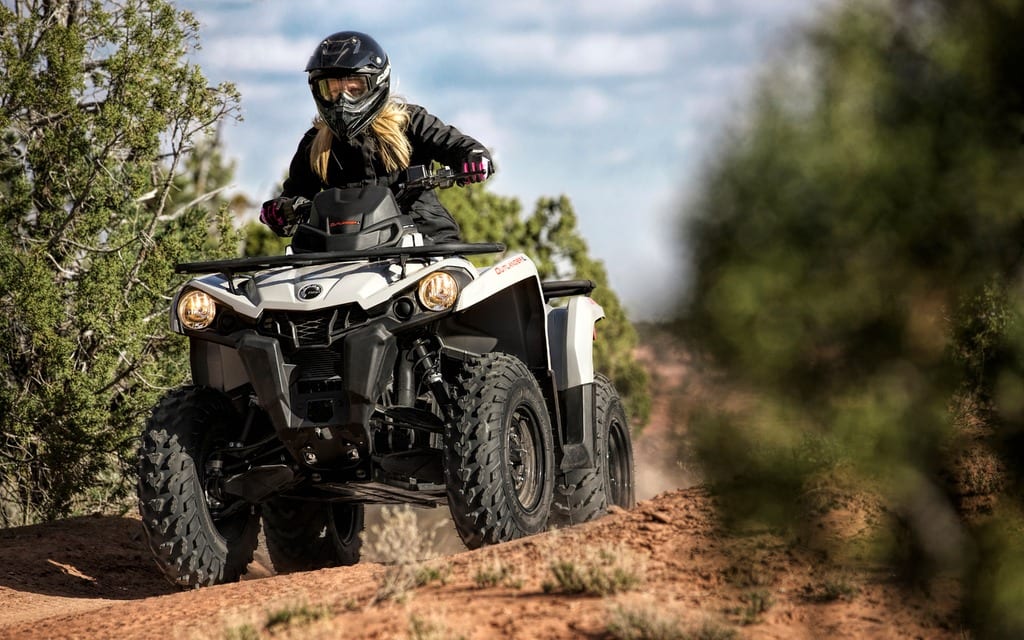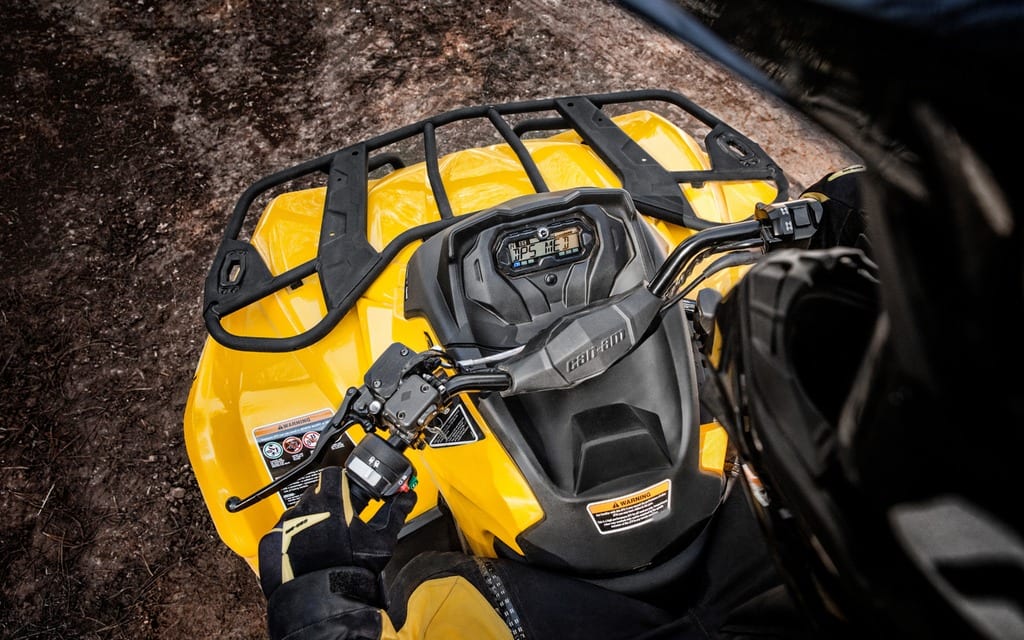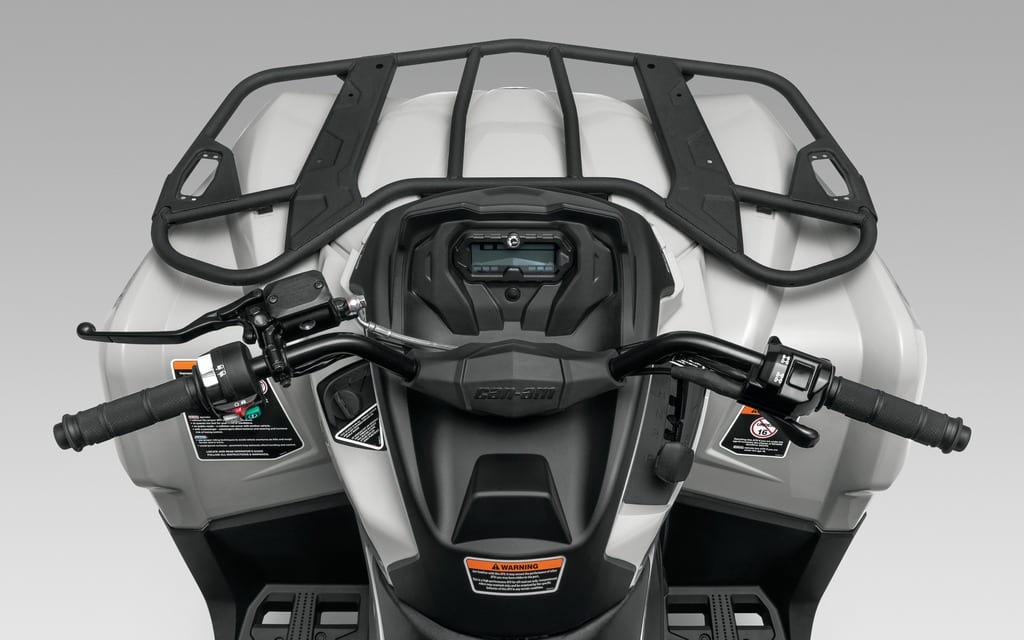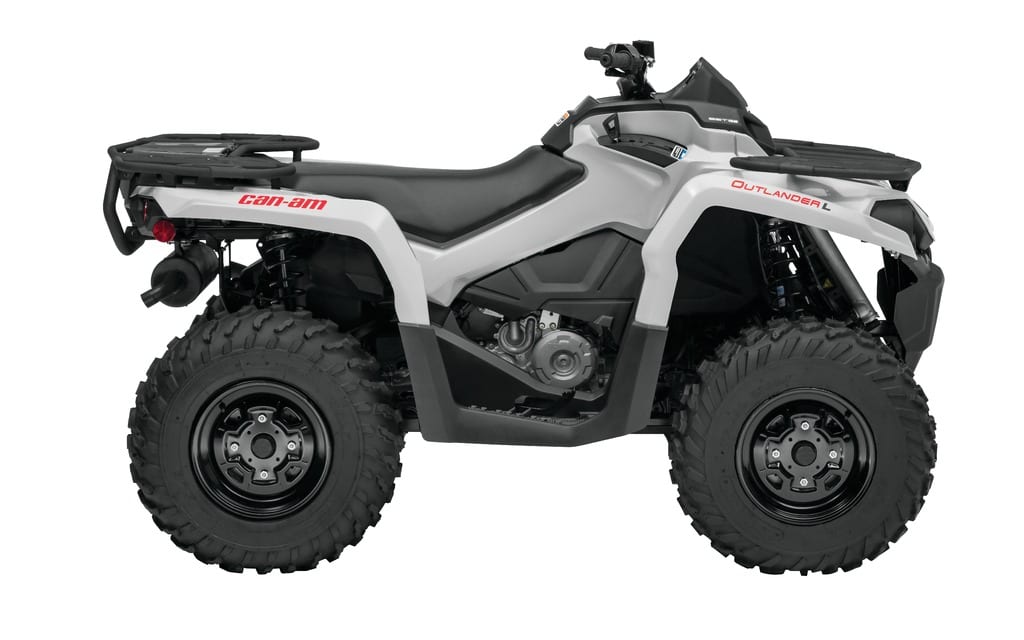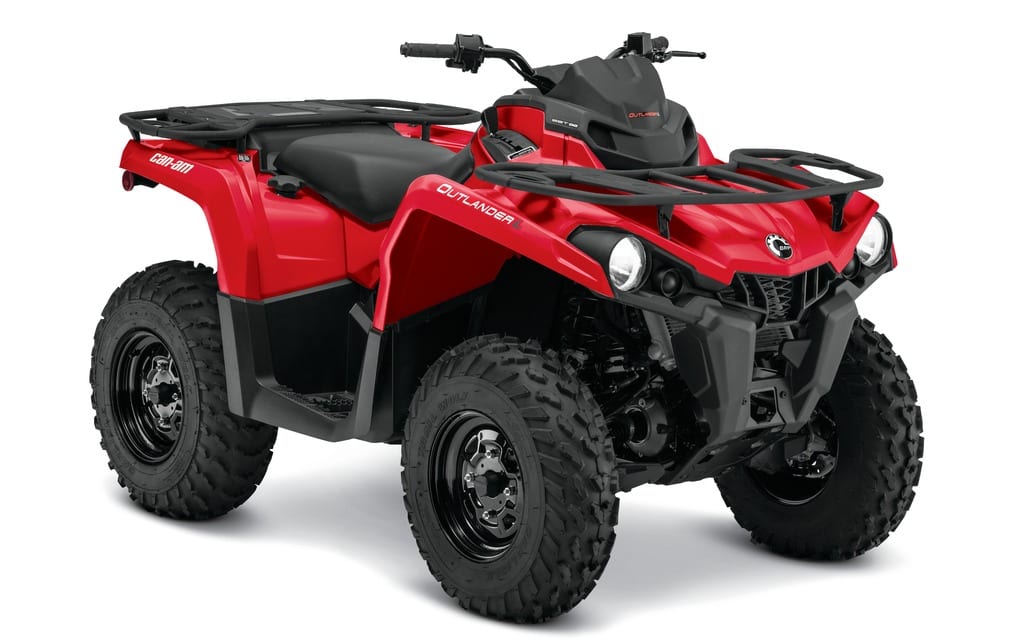The 2015 Can-Am Outlander L was brought to life for a very good reason: accessibility. In the price competitive mid-range category, things are heating up. Many manufacturers are realizing how important this precise part of a fragile segment of the motor vehicle industry has become. Some people might still seek after extravagance, but that group of buyers is now far from being an important percentage of that whole, somewhat shrunken, market share. The new 2015 Can-Am Outlander L 450 and L 500 ATVs, also available in the MAX platform, include the key Can-Am precision-engineered features and a rider-focused design, but also represent the most affordable SST G2 Can-Am ATVs to date.
The 2015 Can-Am Outlander L models come with either a purpose-built, new 38-HP liquid-cooled, single-cylinder Rotax 450 four-stroke, or the established 46-HP liquid-cooled, SOHC Rotax V-Twin 500 engine. For a beginner, at an MSRP of $7,199 with a 5-year extended warranty, the basic 2015 Can-Am Outlander L 450, without a power-steering, unit, seems like a good deal, even if we haven’t tried one yet. We will soon though, as we were invited to their 2015 media event end of October, oddly enough this year, after everyone else’s.
We actually don’t quite get how they made this quad to be available at such a good price, because quite frankly, it has all you would expect from a Can-Am. Just to be sure that everyone understands what this new way of calling an Outlander is all about; yes it is a tad lighter than the regular Outlander, but both those models are very similar in dimensions. The only place where you truly lose with the L is in dry storage space, which drops about to half of what you get on the full-size Outlander. Wheelbase is the same at 51 inches, ride width is also the same 46 inches, so size wise it looks much smaller, mainly because of the 25 inch Carlisle Trail Wolf being used instead of the Carlisle Badland 26ers. You get the same fuel capacity at 5.4 gallons (20.5 litres) and same dual 214 mm ventilated disc brakes with hydraulic twin-piston calipers up front and single 214 mm ventilated disc brake with hydraulic twin-piston caliper at the rear. It has the new dual-room air filtration system setup that captures and traps dirty air to then effectively transfer clean air to the engine for optimal performance. The more we touch and peer into these new L models, the more we like them.
The Max is even more appealing to us; why wouldn’t anyone want to be ready to share a romantic little trail ride? The rear seat design is truly well made. It features a backrest and handholds that flex to help absorb impact of rough terrain, and the contoured raised seating position provides better trail visibility and additional support. The coolest thing is that it snaps right off in a few seconds and the Max simply becomes a more stable and comfortable 1-up. It’s a known fact, the 8 inch longer wheelbase doesn’t just make a Max viable for safe two-up operation but also improves driveability, even in tight rough trails where the angles in the ride don’t change as abruptly when going over good sized logs, stumps or rocks. Even the passenger floorboards, which are raised, angled and feature dual grips, can come in handy in certain extreme 1-up situations.
You get the exact same practical 1,300 lb. (590 kg) towing capacity and oddly enough even more rack capacity than with the higher priced Outlander. The all-metal racks can hold 120 lb. (54.4 kg)? up front and 240 lb. (109 kg) at the rear. That’s 20 extra pounds on the front and 40 more on the rear one.
By now you must be wondering how come these L tagged Outlander models are cheaper to buy. Well there are some things that are left out or simplified on the L’s to make them more affordable machines. No anti-dive geometry for the front A-arm suspension, lighting is kept more basic with 70-W from dual 35-W front lights. The 230-W from twin 60-W projectors and dual 55-W reflectors are impressive in efficiency, but just might not be a necessity. All Outlander models have the taillight with brake light capability. Also, the Digitally Encoded Security System (D.E.S.S.) isn’t on the L models. You also get a negligible half-inch less in ground clearance and in rear suspension travel.
With the same Torsional Trailing arm Independent rear suspension (TTI), CVT sub-transmission with high, low, park, neutral & reverse with standard engine braking, as well as those sturdy steel racks with integrated LinQ quick-attach accessory system that offers convenient and adaptable cargo hauling capabilities and works with numerous Can-Am rack accessories, you just can’t seem to go wrong with an L. You’re only feasible reason left to buy the other Outlander, with a 650 or 800R Rotax, would be if in need of lots of power, but we implore you to try their 500 V-twin, which we would be surprised if it didn’t provide you with enough.
For more information on the above mentioned models, please visit the Can-Am Off-Road Website
More from Can-Am on ATV Trail Rider :
Can-Am ATV Models – Can-Am UTV Models – Can-Am ATV Reviews – Can-Am UTV Reviews


